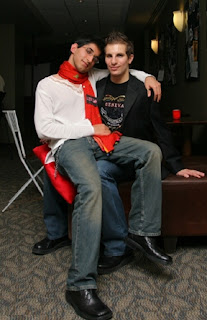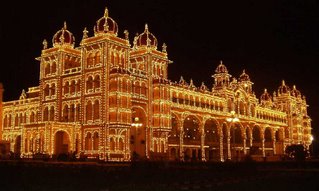 The Khajuraho temples were built during the reign of the Chandelas. While some show marks of a Shaivite sensibility, others clearly manifest the influence of Vaishnaism, Jainism, and tantrism. These temples have an architectural character distinct from that of any other group of temples elsewhere in the country. Instead of being contained within the customary enclosure wall, each temple stands on a high and solid masonry terrace. Though none of the temples are very large, they are still imposing structures because of their elegant proportions and rich surface sculpture.
The Khajuraho temples were built during the reign of the Chandelas. While some show marks of a Shaivite sensibility, others clearly manifest the influence of Vaishnaism, Jainism, and tantrism. These temples have an architectural character distinct from that of any other group of temples elsewhere in the country. Instead of being contained within the customary enclosure wall, each temple stands on a high and solid masonry terrace. Though none of the temples are very large, they are still imposing structures because of their elegant proportions and rich surface sculpture.The Khajuraho temples and History India arts of sexual now grace the posters of the Indian Tourist office, and numerous films have been shot at the temple grounds. It is with these temples in the background that some of the greatest exponents of Indian classical dance have performed for admiring audiences. But it is in discussions ranging around the cultural construction of sexuality that Khajuraho has featured prominently. The sheer eroticism of the sculptures is often pointed to as evidence of India's libertine past. Thus, gays and lesbians have found in Khajuraho evidence of the enlightened attitudes of the pre-modern Indian culture, while others point o the allegedly baneful influence of the Islamic and British presence in India, which is supposed to have led to repressive sexual mores. But few have asked what Khajuraho tells us about everyday notions of sexuality, or what inferences we are to derive about Indian sexual mores and practices from these temples.
[ Source : sscnet.ucla.edu ]
 Mysore Zoo is one of the city’s most popular attractions. It was established under royal patronage in 1892, making it one of the oldest zoos in the world, and since then millions of people have enjoyed its wonderful animals and spectacular grounds. The zoo has a very successful breeding program and houses animals from more than 40 different countries. There are many native
Mysore Zoo is one of the city’s most popular attractions. It was established under royal patronage in 1892, making it one of the oldest zoos in the world, and since then millions of people have enjoyed its wonderful animals and spectacular grounds. The zoo has a very successful breeding program and houses animals from more than 40 different countries. There are many native  The 36 emerald green islands on the Lakshadweep Islands, India are a set of charming and stunning
The 36 emerald green islands on the Lakshadweep Islands, India are a set of charming and stunning  About three-quarters (72%) of truck drivers in North Pakistan who participated in a recent survey published in AIDS Analysis
About three-quarters (72%) of truck drivers in North Pakistan who participated in a recent survey published in AIDS Analysis  Mysore Palace or the Maharajah's Palace located in the heart of the city Mysore, southern
Mysore Palace or the Maharajah's Palace located in the heart of the city Mysore, southern  A priceless national treasure and the pride of a kingdom, the Mysore Palace is the seat of the famed Wodeyar Maharajas of Mysore. An eclectic synthesis of architectural styles the palace is one of India’s most dramatic national monuments. Today it is a museum housing treasures from across the world reflecting the rich and colorful history of the erstwhile princely state of Mysore.
A priceless national treasure and the pride of a kingdom, the Mysore Palace is the seat of the famed Wodeyar Maharajas of Mysore. An eclectic synthesis of architectural styles the palace is one of India’s most dramatic national monuments. Today it is a museum housing treasures from across the world reflecting the rich and colorful history of the erstwhile princely state of Mysore.